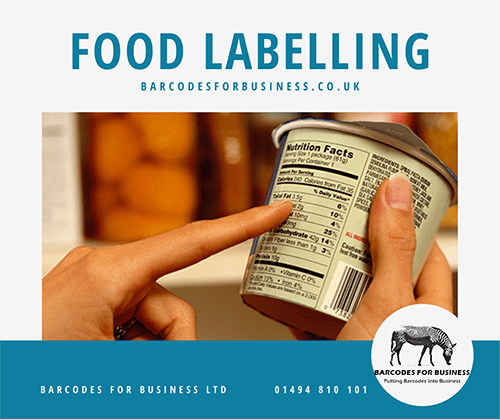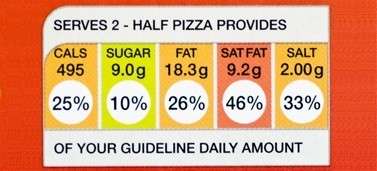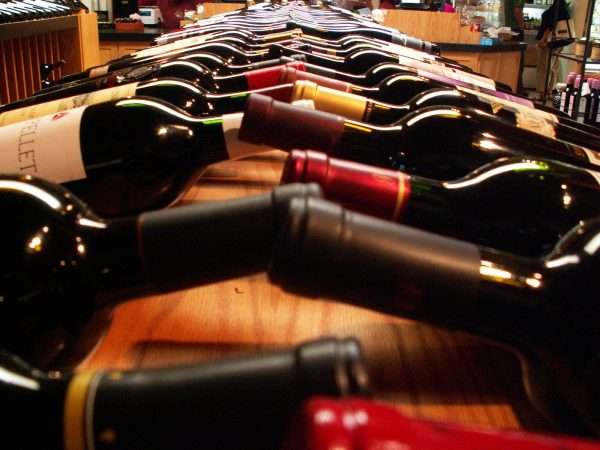Food and Beverage
Food and Beverage
Food

Food labelling is just one of our specialities and we’re happy to say that several of the UK’s leading food and retail brands trust us with their products. They rely on our expertise to bring them consistently excellent designs, prices and quick turnaround times. We produce food labels for companies making freezer and chilled foods, baked goods, fresh food, microwaveable/oven ready meals, bottles and jars.
We use the latest innovations in foil, embossing and holographic label materials and can advise on the best option depending on what look is required. All our food packaging labels use top quality adhesives to meet any moisture or hot/cold temperature requirements.
We can also help with the design of your labels through our in-house design department to ensure your product gets the best shelf stand-out possible.
Introduction
Information is provided on packaging of food products to help consumers choose between different foods, brands and flavours. The European (EU) Food Information Regulation (FIR) came into force in December 2011 and applies to all member states. The new regulation serves to bring together existing general food labelling and nutrition labelling legislation while bringing it up to date with recent developments in food information. It has also simplified certain aspects to improve clarity and therefore consumer understanding. Companies have been given a 3 year transitional period to implement the legislation, giving them until December 2014 to comply with the changes to packaging. Mandatory provision of back of pack nutrition information will apply from December 2016. The following information is currently required by Law.
The Name of the Food or Drink
The name of the food must be clearly stated on the packaging. Some foods have made-up names, which give no information about what is in them or how they have been processed. In such cases, a description of the food must be given so that it is neither ambiguous nor misleading. If the food has been processed in some way, the process must be included in the title, for example dried apricots, salted peanuts or smoked mackerel. The name should also describe the differences between apparently similar products. For example a ‘fruit yogurt’ should be flavoured using real fruit, whereas a ‘fruit flavoured yogurt’ can be flavoured using artificial flavourings.
List of Ingredients
The ingredients list must include all the ingredients of the food or drink (including water and additives) although some exceptions exist. The ingredients must be listed in order of weight, according to the amounts that were used to make the food, starting with the largest ingredient and ending with the smallest. The ingredient names should be listed in the language relevant to the country where the food is being sold.
Genetically Modified (GM) Ingredients
The presence in foods of genetically modified organisms (GMOs) or ingredients produced from GMOs must be indicated on the labels. Foods produced with GM technology (e.g. cheese produced with GM enzymes) and products such as meat, milk and eggs from animals fed on GM animal feed do not have to be labelled.
Beverages Containing Alcohol or Caffeine
Beverages that contain more than 1.2% by volume of alcohol will have to be labelled with the actual strength of volume of alcohol. Beverages with high caffeine content (more than 150mg/l) will have to be labelled with the amount of caffeine that they contain, unless they are based on coffee or tea. This is because drinks containing high amounts of caffeine are not recommended for children or pregnant or breastfeeding women.
Weight or Volume
The actual weight or volume of a food or drink must be shown on the label if it is more than 5g or 5ml. The weight or volume does not have to be exact but must be at least within a few grams or millilitres. For foods that are packaged in liquid, e.g. sweetcorn, the drained weight of the food should be displayed. Some foods, such as loose tea and butter, are sold only in standard amounts. The symbol ‘e’ is used to show that the weight complies with the EU requirement for weight under the average system, i.e. the average pack is at least the weight declared. Comparing the weight and the price of different brands enables consumers to make choices on value for money between brands.
Date Marks and Storage Conditions
Most foods must be marked with either a ‘best before’ or ‘use by’ date mark so that it is clear how long a product is likely to last once it has been bought and/or opened. The ‘use by’ date is used for foods that are highly perishable, e.g. milk, meat, fish and are therefore not safe to eat after this date even though they may not taste any different. Other foods have a best before date, after which foods may not be at their best with regard to flavour, colour and texture. However they will probably be safe to eat as long as they have been stored according to the instructions on the label. Storage instructions must be included to ensure freshness. Following storage and preparation instructions should prevent food from spoiling too quickly, reduce the risk of food poisoning and ensure the food looks and tastes its best when eaten. Other guidance on the mode of storage has become universal. For example, a simple star system is used to indicate what temperature the food should be held at and for how long:
* -6°C for 1 week (pre-frozen food only)
** -12°C for 1 month (pre-frozen food only)
*** -18°C for 3 months (pre-frozen food only)
**** -18°C or colder for 6 months (pre-frozen food; can also be used to freeze fresh food from room temperature)
Preparation and Storage Instructions
When necessary, instructions on how to prepare and cook the food must be given on the label. If the food has to be heated, the temperature of the oven and the cooking time should usually be stated. Instructions may also be given for heating in a microwave oven. These instructions should ensure the food tastes its best and that it will be thoroughly heated to a core temperature of 75°C, which minimises the risk of food poisoning.
Name and Address of Manufacturer
Contact details of the food manufacturer who is responsible for the information on the label must be stated. This gives consumers the opportunity to contact the manufacturer if they have a complaint about the product or if they wish to know more about it.
Country of Origin
The label must display clearly where the food has come from if it would be misleading not to show it, e.g. a tub of Greek yogurt which was made in France. This includes fresh and frozen meat. The origin of the main ingredients has to be given if this is different from where the final product is made.
Lot or Batch Number
This is not part of the labelling regulations but is required under UK law. The lot or batch number is a code that can identify batches of food in the event that they have to be recalled by the manufacturer, packer or producer. A date mark is sometimes used as a lot mark, or a lot mark may be indicated by the letter ‘L’.
Other Information
Other information that may appear but isn’t mandatory includes:- recipes and cooking instructions on labels for use of the product.- A picture of the product used as part of a composite dish or meal is referred to as a serving suggestion. This is to indicate that this is not how the product will look when the packaging is removed.
Allergen Information
There are 14 food ingredients – milk, eggs, peanuts, nuts from trees (including Brazil nuts, hazelnuts, almonds and walnuts), fish, molluscs (such as mussels and oysters), crustaceans (including crab and shrimps), soybeans, cereals containing gluten (wheat, barley, rye and oats), lupin, celery, mustard, sesame seeds, sulphur dioxide and sulphites – that must always be clearly labelled as they are known to cause allergies and intolerances in some individuals. According to the European regulation (which comes into force from 2014) these ingredients or foods must be declared in the ingredients list and be highlighted in a way that makes it stand out e.g. in a different font or in bold. For example, ‘single cream (milk)’ or ‘salmon (fish)’. If there is no ingredients list, for example on a bottle of wine that contains sulphites, the food or ingredient must be highlighted somewhere else on the label.
In the regulation, allergen information is not allowed to be repeated anywhere else on packaging. However, sign posting to the allergen information in the ingredients list is allowed. This means allergy advice boxes and statements to warn customers when a food contains an allergen or has a cross-contamination risk with an allergen are no longer allowed. However, they can be used to direct people to the allergen information in the ingredients list. The new regulations also ensure that allergy information is provided on non-pre-packed food in restaurants and cafes, either displayed on menus or available on request. Seven out of ten severe allergic reactions occur when people eat outside of their home so this should be especially helpful to people with food allergies and intolerances.
Mandatory ‘Back of Pack’ Nutrition Labelling
A nutrition declaration on the back of pack will be mandatory for pre-packed foods from 13 December 2016 and has to be presented per 100g/ml or per portion. The following needs to be included: energy value (in kJ and kcal), and amount in g of fat, saturates, carbohydrate, sugars, protein and salt.
Further information can be included but is not compulsory for: monounsaturates, polyunsaturates, starch, fibre, vitamins or minerals. If a nutrition or health claim is made on the packaging then the nutrient in question must be declared.
Voluntary Front of Pack Labelling
Repetition of certain nutrients from back of pack labelling is allowed on a voluntary basis. This information must include: energy value alone or energy plus amounts of fat, saturates, sugars and salt. In the UK, following new government guidelines, a consistent front of pack labelling scheme will be implemented combining guideline daily amounts (GDA), traffic light colour coding with high, medium or low text (see Figure 1). This is expected to be in use from summer 2013 onwards. For more information see: http://www.dh.gov.uk/health/2013/01/food-labelling/
Figure 1: ‘Hybrid’ front of pack labelling scheme (note that in future ‘cals’ will change to ‘energy’ and values will be given in both calories and kilojoules).

Beverage

Barcodes for Business have many years’ experience in creating and supplying high quality labels for the beer and spirit industry. Our labels are both professional and creative to help the products stand out whilst instore. We use different printing technologies, depending on what is most suitable for the application, including an industrial digital press for top quality coloured branding projects at very competitive prices. Free quotes and label consultations available upon request.

